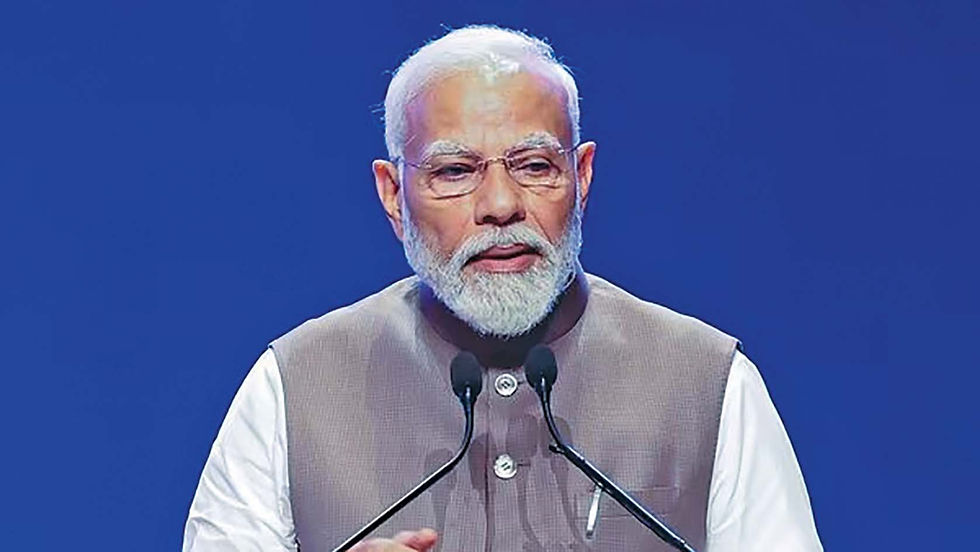Mumbai: In a resounding statement signalling a historic shift, Gadchiroli Superintendent of Police (SP) Neelotpal has declared the district, once the dark heart of the ‘Red Corridor,’ is on the verge of becoming completely free of the Naxal menace. The SP expressed absolute confidence in the complete eradication of the banned CPI (Maoist) presence, noting that the remaining cadres have dwindled to a mere handful. “There has been a sea change in the situation,” SP Neelotpal stated, highlighting the dramatic turnaround. He revealed that from approximately 100 Maoist cadres on record in January 2024, the number has plummeted to barely 10 individuals whose movements are now confined to a very small pocket of the Bhamragad sub-division in South Gadchiroli, near the Chhattisgarh border. “North Gadchiroli is now free of Maoism. The Maoists have to surrender and join the mainstream or face police action... there is no other option.” The SP attributes this success to a meticulously executed multi-pronged strategy encompassing intensified anti-Maoist operations, a robust Civic Action Programme, and the effective utilisation of Maharashtra’s attractive surrender-cum-rehabilitation policy. The Gadchiroli Police, especially the elite C-60 commandos, have achieved significant operational milestones. In the last three years alone, they have neutralised 43 hardcore Maoists and achieved a 100 per cent success rate in operations without police casualties for nearly five years. SP Neelotpal highlighted that the security forces have aggressively moved to close the “security vacuum,” which was once an estimated 3,000 square kilometres of unpoliced territory used by Maoists for training and transit. The establishment of eight new police camps/Forward Operating Bases (FoBs) since January 2023, including in the remote Abujhmad foothills, has been crucial in securing these areas permanently. Winning Hearts, Minds The Civic Action Programme has been deemed a “game changer” by the SP. Through schemes like ‘Police Dadalora Khidaki’ and ‘Project Udaan’, the police have transformed remote outposts into service delivery centres, providing essential government services and employment opportunities. This sustained outreach has successfully countered Maoist propaganda and, most critically, resulted in zero Maoist recruitment from Gadchiroli for the last few years. Surrender Wave The state’s progressive rehabilitation policy has seen a massive influx of surrenders. “One sentiment is common among all the surrendered cadres: that the movement has ended, it has lost public support, and without public support, no movement can sustain,” the SP noted. The surrender of key figures, notably that of Mallojula Venugopal Rao alias ‘Bhupathi,’ a CPI (Maoist) Politburo member, and his wife Sangeeta, was a “landmark development” that triggered a surrender wave. Since June 2024, over 126 Maoists have surrendered. The rehabilitation program offers land, housing under the Pradhan Mantri Awas Yojana, and employment. Surrendered cadres are receiving skill training and are successfully transitioning into normal life, with around 70 already employed in the local Lloyds plant. A District Reborn The transformation of Gadchiroli is now moving beyond security concerns. With the decline of extremism, the district is rapidly moving towards development and normalcy. The implementation of development schemes, round-the-clock electricity, water supply, mobile towers, and new infrastructure like roads and bridges is being given top priority. He concludes that the police’s focus is now shifting from an anti-Maoist offensive to routine law-and-order policing, addressing new challenges like industrialisation, theft, and traffic management. With the Maoist movement in “complete disarray” and major strongholds like the Maharashtra-Madhya Pradesh-Chhattisgarh (MMC) Special Zone collapsing, the SP is highly optimistic. Gadchiroli is not just getting rid of the Naxal menace; it is embracing its future as a developing, peaceful district, well on track to meet the central government’s goal of eradicating Naxalism by March 31, 2026.





Comments